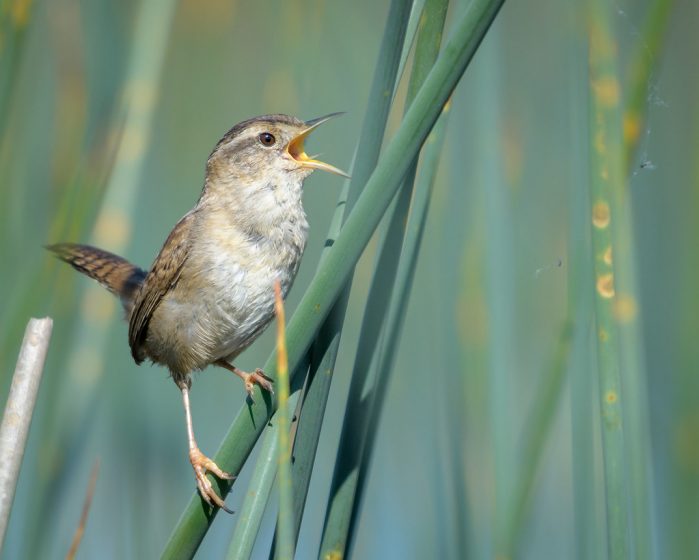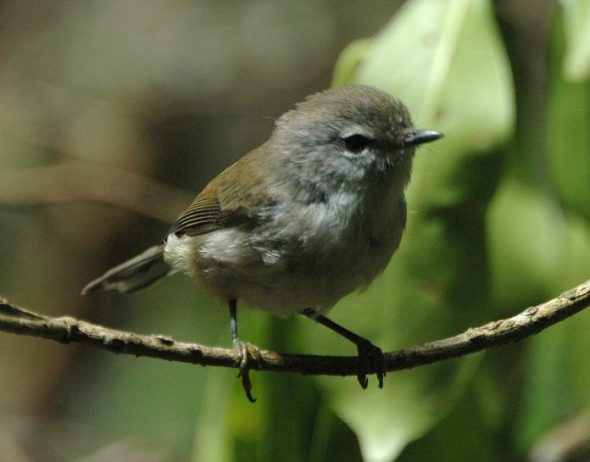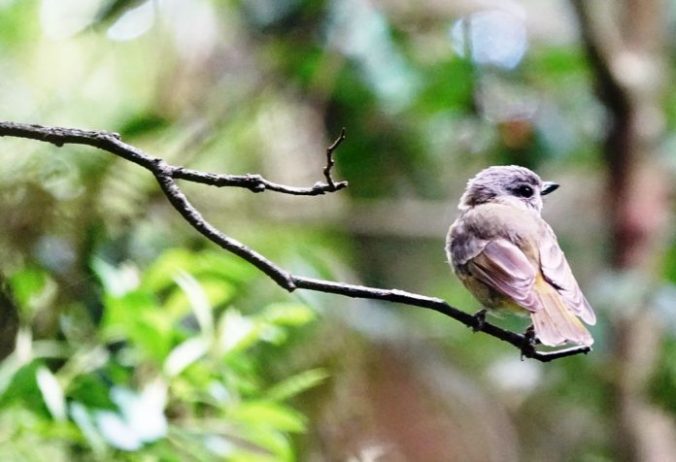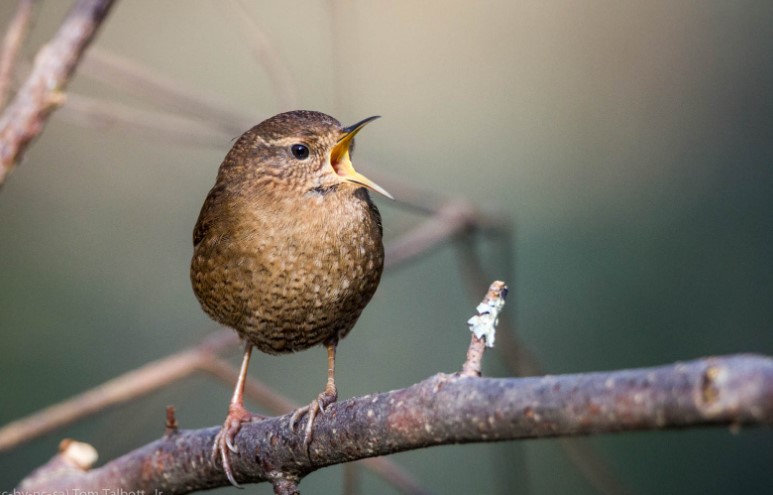Page Contents
Description
Wrens are small insectivorous birds that live in a variety of habitats throughout the United States. They have long, slender bills adapted for gleaning insects from the ground and vegetation. Most species are migratory, although some populations are year-round residents.
Marsh Wren Facts
The marsh wren (Cistothorus palustris) is a common bird inhabiting freshwater cattail marshes and salt marshes. Marsh wrens breed throughout most of the northern half of the United States and in coastal areas as far south as Florida. In winter, they are in the southern United States and Mexico, particularly in coastal areas.
Marsh wrens eat mostly insects and occasionally snails, which they glean from the surface of vegetation. This species was formerly known as the long-billed marsh wren (Telmatodytes palustris).
Body Size
Although wrens are small (13 cm bill tip to tail tip; about 10 garms body weight), males tend to be about 10 percent heavier than females. However, the body weight varies seasonally; in Georgia, where marsh wrens are resident throughout the year, they tend to be heavier in the spring and summer than in the fall and winter.
Habitat
Marsh wrens inhabit freshwater and saltwater marshes, usually nesting in association with bulrushes, cattails, and sedges or, on occasion, in mangroves. Standing water from several centimeters to nearly a meter is typical of the areas selected. However, permanent water is necessary to provide a food supply of insects necessary to maintain the birds and as a defense against predation. Deeper water and denser vegetation are associated with reduced predation rates.
Diet
Marsh wrens consume aquatic invertebrates, other insects, and spiders, which they glean from the water surface, on stems and leaves of emergent vegetation, and on the marsh floor. They sometimes also feed by fly-catching.
The insect orders most commonly taken include Coleoptera (both adults and larvae), Diptera (adults and larvae), Hemiptera (juveniles and adults), Lepidoptera (larvae most commonly fed to nestlings), and Odonata (newly emerged).
When feeding the young, at first the parents bring mosquito adults and larvae, midges, larval tipulids, and other small insects. As the young mature, the parents bring larger insects such as ground beetles, diving beetles, long-horned beetles, caterpillars, dragonflies, and sawflies to the nestlings.
In a population in Georgia, spiders (usually 1 to 3 mm in size, sometimes 12 to 15 mm), small crabs (5 to 7 mm), small snails (1 to 3 mm), and insect eggs were also consumed and fed to nestlings. Thus, organisms that are aquatic for all or part of their lives are an important component of the diet of marsh wren adults and nestlings.
Migration
Marsh wrens are year-round residents in some southern and coastal maritime regions, where marshes do not freeze. Most migratory wrens breed throughout the northern half of the United States through southern Canada and winter in Mexico and the southern half of the United States.
Breeding Activities and Social Organization
Many populations of marsh wren are polygynous, with some males mating with two, occasionally three, females in a season. While the remaining males have one mate or remain bachelors, A study found 5 to 11 percent bachelor males, 41 to 48 percent monogamous males, 37 to 43 percent bigamous males, and 5 to 12 percent trigamous males in two marshes in Manitoba, Canada.
Similarly, 16 percent are bachelors, 57 percent are monogamous, and 25 percent are bigamous males in eastern Washington state. In contrast, most males were found to be monogamous through four years of study in Georgia.
Marsh Wren Nest
Male birds arrive at the breeding marshes before the females to establish territories that include both nest sites and foraging areas. Males build several nests in their territories throughout the breeding season. The female usually only adds lining material to a nest of her choice, although some may help construct the breeding nest.
Breeding nests are oblong in shape, with a side opening, and are woven of cattails, reeds, and grasses and lashed to standing vegetation, generally 30 cm to 1 m above standing water or high tide. Incubation lasts approximately 2 weeks, as does the nesting period.
After fledging, one or both parents continue to feed the young for about 12 days. Many populations typically rear two broods per year, although some may rear three. In the more monogamous populations, both parents regularly feed young, but in the more polygynous ones, the females may provide most of the food, with males assisting only toward the end of the nestling period.
Marsh Wren Range
Marshes smaller than 0.40 ha are usually not used by breeding marsh wrens. The average male territory size for a given year and location can range from 0.006 to 0.17 ha, depending on the habitat and conditions of the year. Also, there is a trend in polygynous populations for polygynous males to defend larger territories than monogamous males or males that end up as bachelors.
Population density. Because the species is polygynous, there may be more females than males inhabiting breeding marshes. Population density varies with the suitability and patchiness of the habitat. Densities as high as 120 adult birds per hectare have been recorded.
Clutch size and number of clutches per year vary with latitude and climate. In some populations, marsh wrens commonly destroy eggs and kill the nestlings of other pairs of their own species and other marsh-nesting passerines. Fledging success depends strongly on nest location; nests over deeper water are less vulnerable to predation.
Of nests lost to all causes, 44 percent were due to mammalian predators, 27 percent were due to other wrens, 11 percent were due to weather, 8 percent were due to nest abandonment, and 13 percent were unknown. The annual mortality of adults is lower than that of first-year birds. Both sexes of this species usually commence breeding in the first year following hatching.
Similar Species
-
The sedge wren (Cistothorus platensis, formerly known as the short-billed marsh wren) nests locally in wet meadows or shallow sedge marshes and hayfields in the northeastern United States, wintering primarily in the southeastern United States. It is slightly smaller, 11 cm, than the marsh wren. None of the other wren species inhabit marshes, although all forage by gleaning insects from vegetation and other surfaces. Wrens that inhabit moist woodlands and open areas are listed below.
2. The house wren (Troglodytes aedon 12 cm) breeds throughout most of the United States and into southern Canada. It inhabits open habitats with brush and shrubs and is found in orchards, farmyards, and urban gardens and parks.
3. The winter wren (Troglodytes troglodytes 10 cm) breeds in southern Canada, where it nests in dense brush, especially along moist coniferous woodlands. It winters primarily in the southeastern United States, where it inhabits many types of woodlands.
4. The Carolina wren (Thryothorus ludovicianus 14 cm) is non-migratory and can be found in both summer and winter in the eastern United States, as far north as northern Delaware and as far west as Oklahoma. It inhabits moist woodlands, swamps, and wooded suburban areas.
5. Bewick’s wren (Thryomanes bewickii 13 cm) is more common in the western states than the house wren and is declining east of the Mississippi. It is found in brushland, stream edges, and open woods.
Read More: Masked Tityra “Tityra semifasciata”







Read More:





